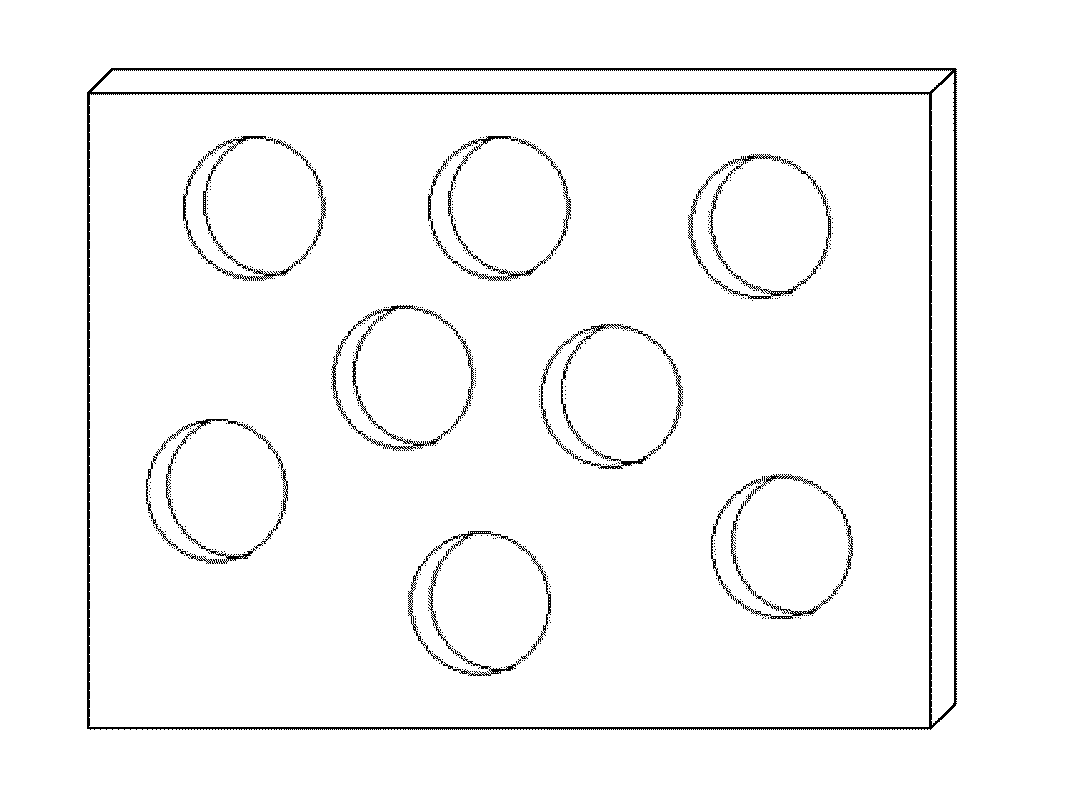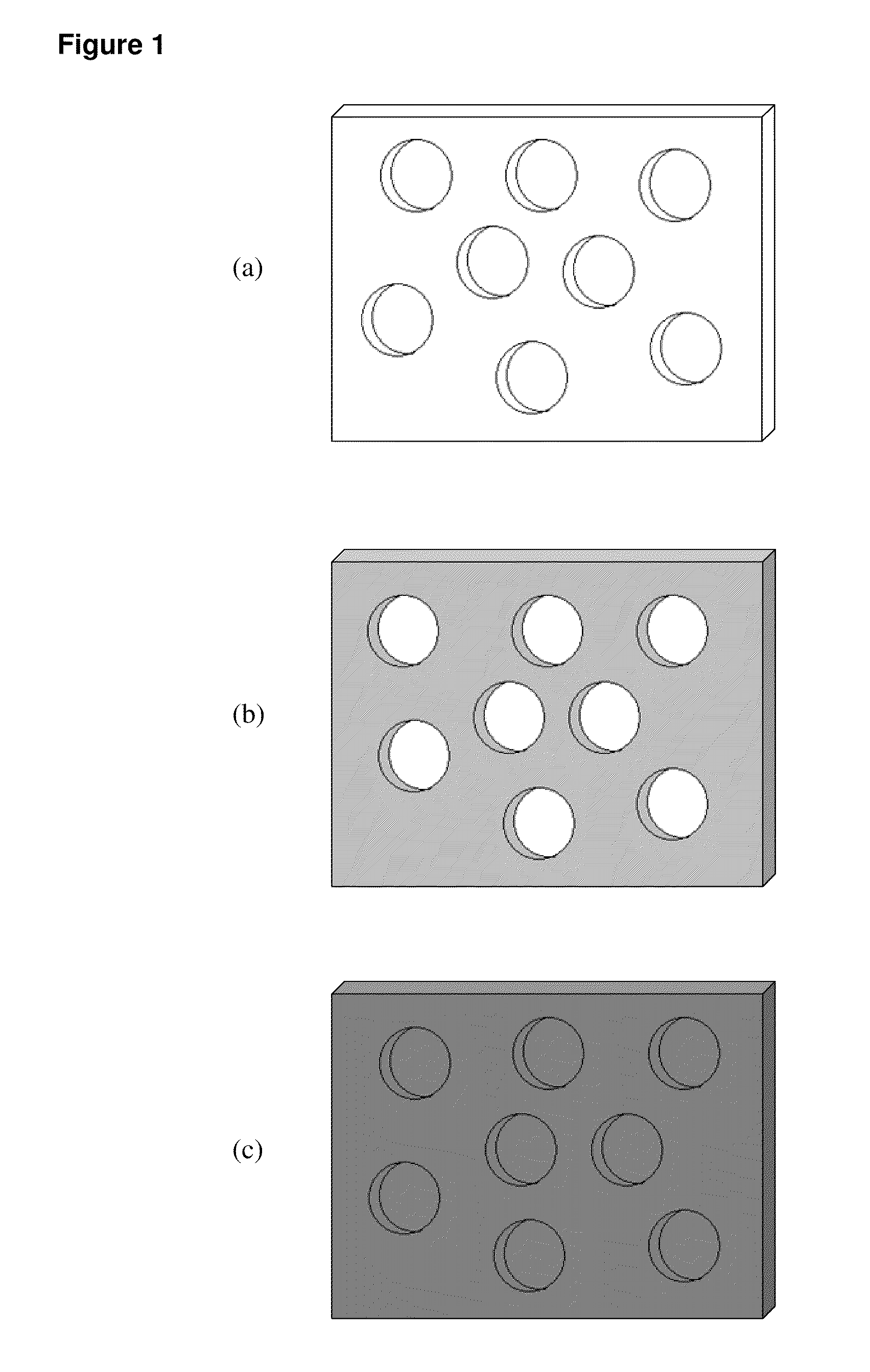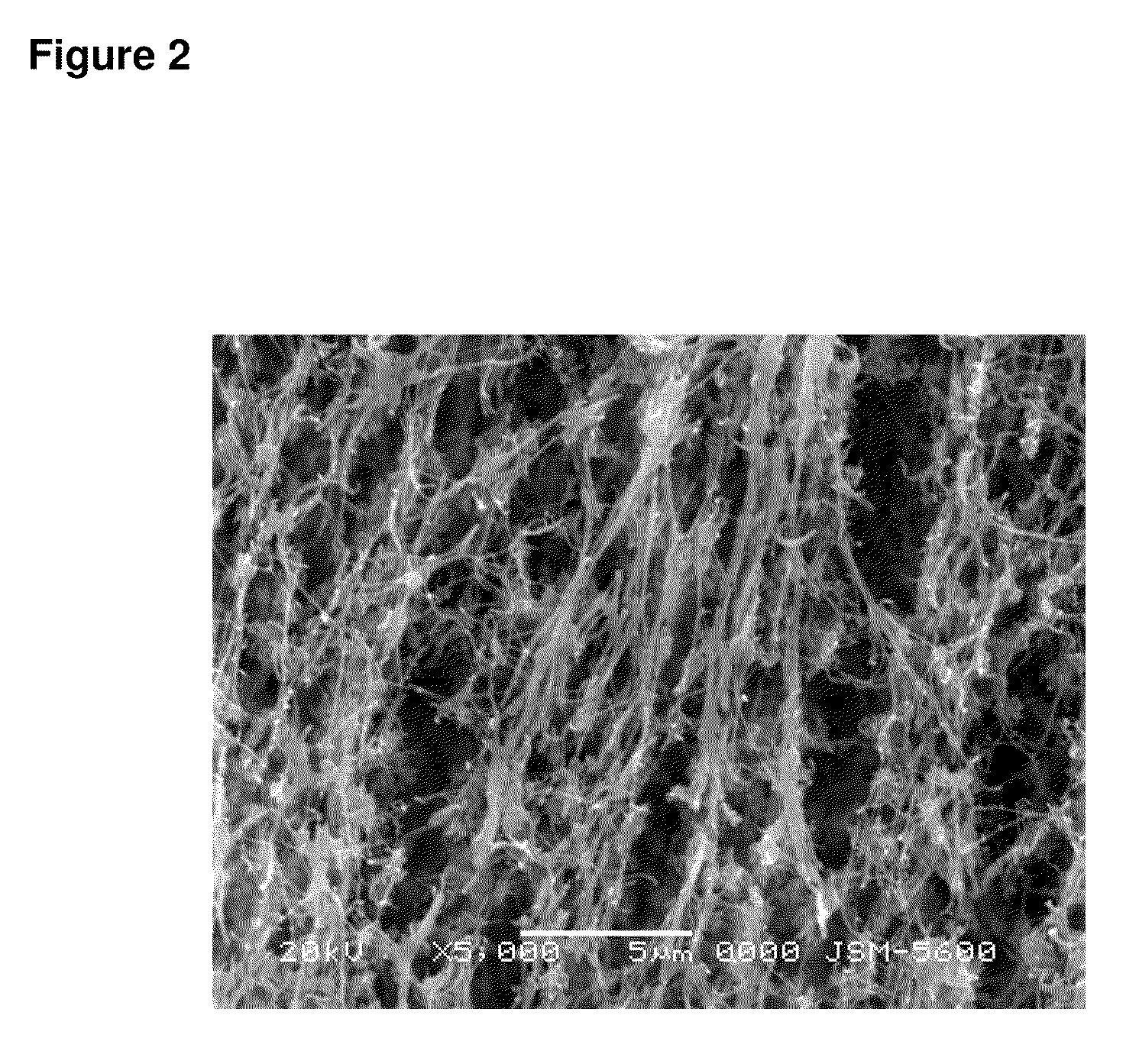Novel proton exchange composite membrane with low resistance and preparation thereof
- Summary
- Abstract
- Description
- Claims
- Application Information
AI Technical Summary
Benefits of technology
Problems solved by technology
Method used
Image
Examples
example
[0054]The following examples and related experimental data were intended to be merely exemplary and in no way intended to be limitative of the present invention.
Preparation of PBI Membranes
[0055]2 wt % of PBI / LiCl / DMAc (N,N′-dimethyl acetamide) solution was prepared by dissolving 10 g PBI and 15 g LiCl in 500 ml DMAc under nitrogen atmosphere at 150° C. The DMAc solvent was then evaporated from the solution at 80° C. under vacuum to obtain a solution with a PBI content of around 8 wt %. The PBI solution was coated on a glass plate using a film applicator with a gate thickness of 100 μm˜130 μm. The glass plate with a thin film of PBI solution was heated at 80° C. for 1 hr and then 120° C. for 5 hr under vacuum to remove DMAc solvent. The PBI membrane was then immersed in distilled water for 3 days and the water was changed each day to remove LiCl. Finally, the PBI membrane was immersed in 85 wt % phosphoric acid solution for 3 days. The final thickness of PBI membrane was around 80 μ...
PUM
| Property | Measurement | Unit |
|---|---|---|
| Thickness | aaaaa | aaaaa |
| Thickness | aaaaa | aaaaa |
| Fraction | aaaaa | aaaaa |
Abstract
Description
Claims
Application Information
 Login to view more
Login to view more - R&D Engineer
- R&D Manager
- IP Professional
- Industry Leading Data Capabilities
- Powerful AI technology
- Patent DNA Extraction
Browse by: Latest US Patents, China's latest patents, Technical Efficacy Thesaurus, Application Domain, Technology Topic.
© 2024 PatSnap. All rights reserved.Legal|Privacy policy|Modern Slavery Act Transparency Statement|Sitemap



